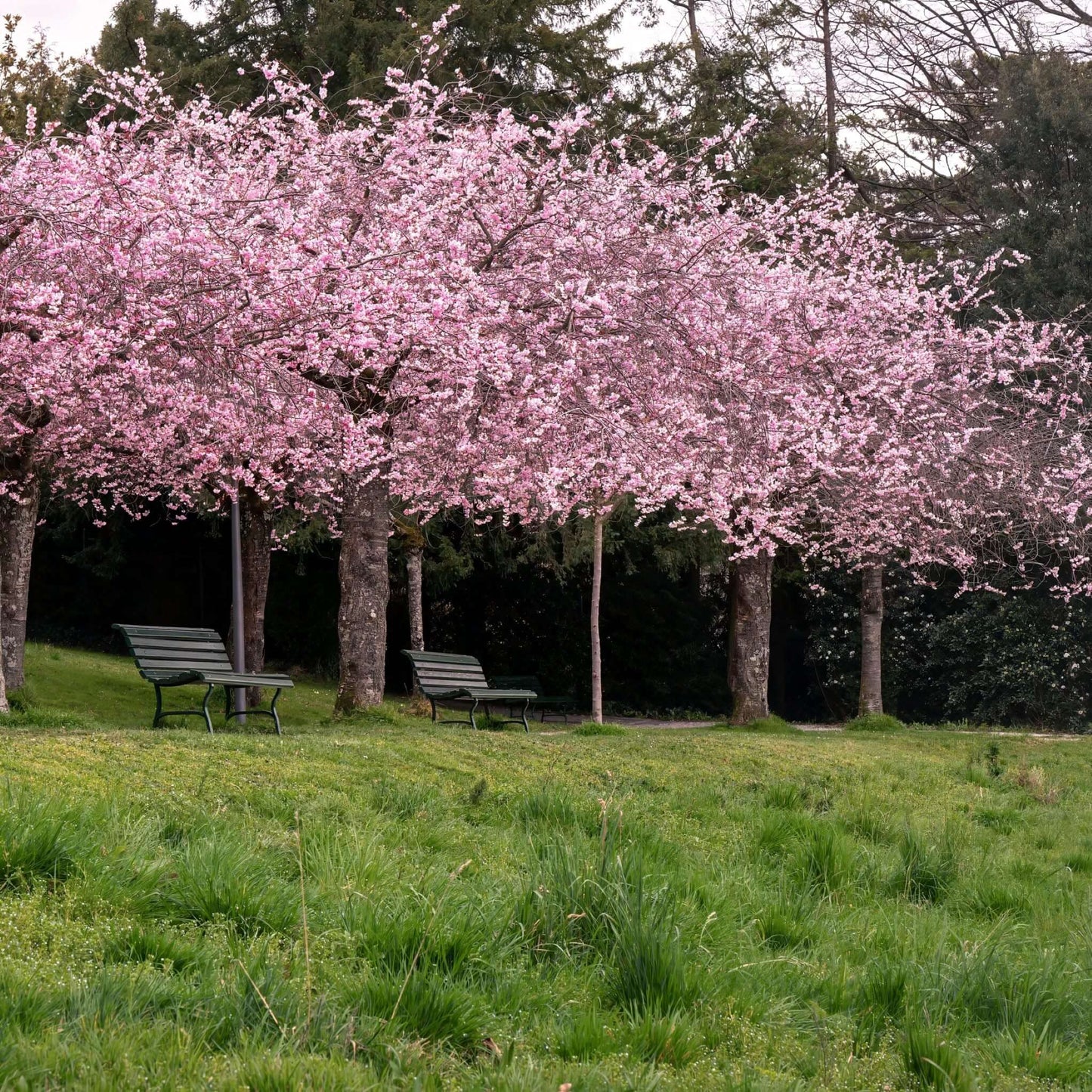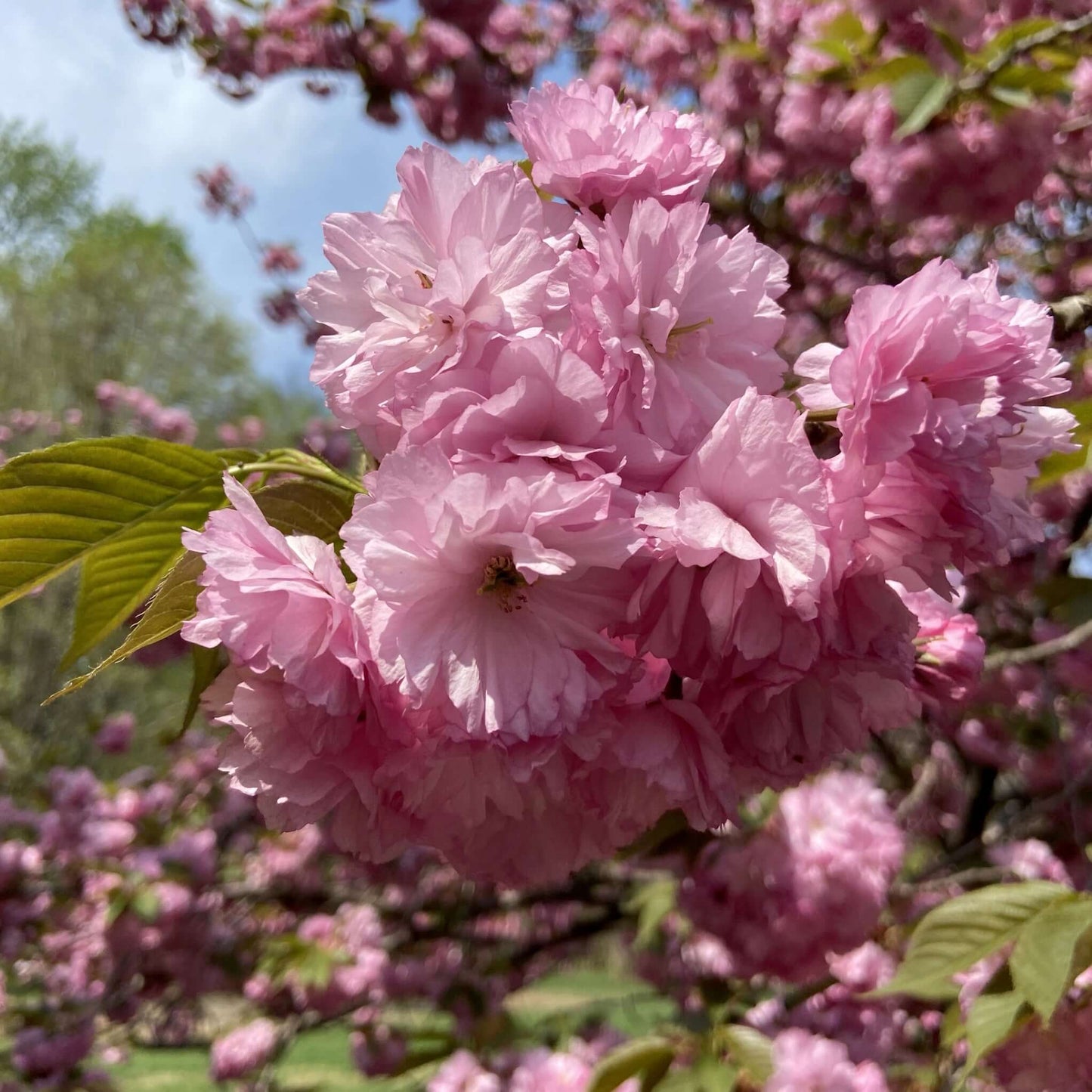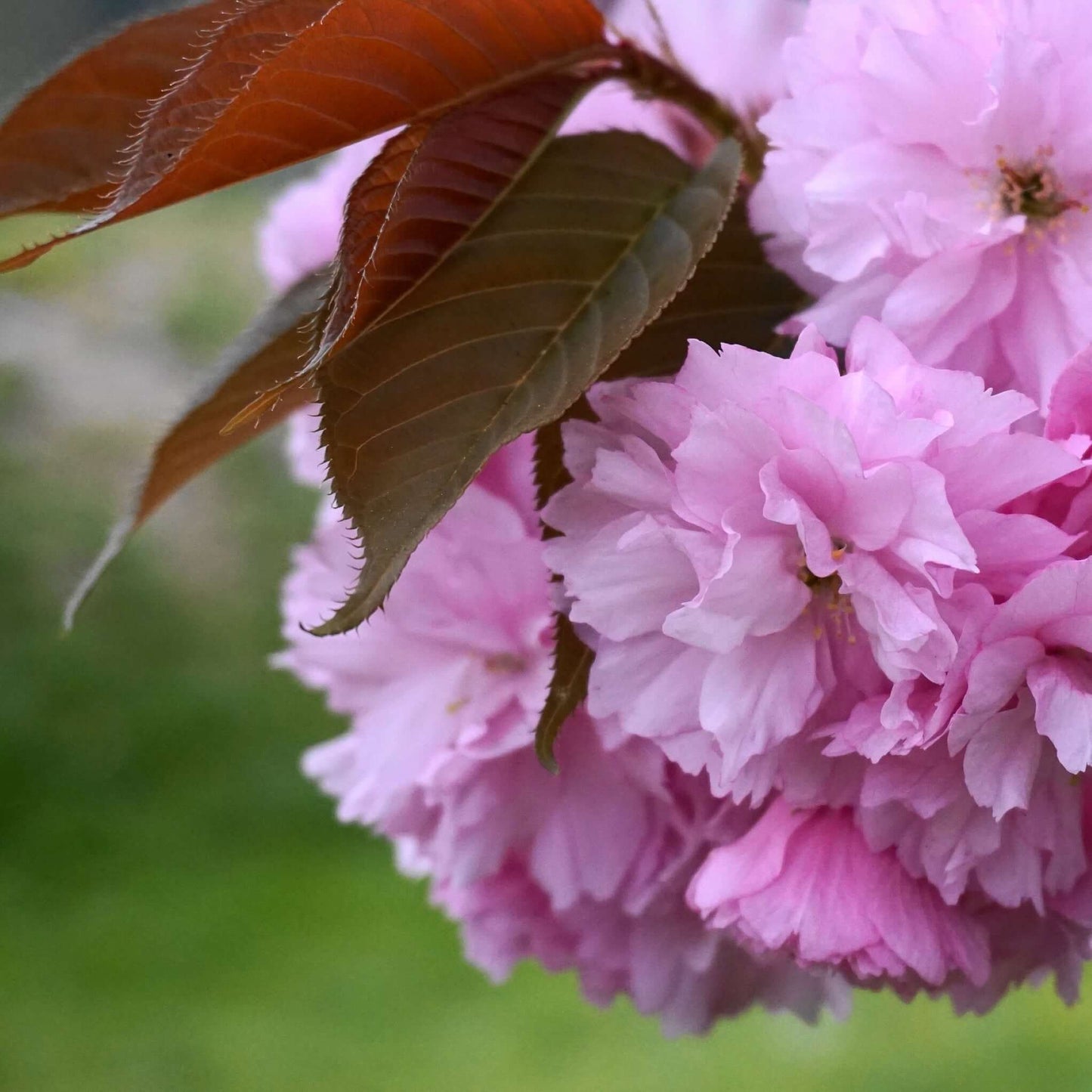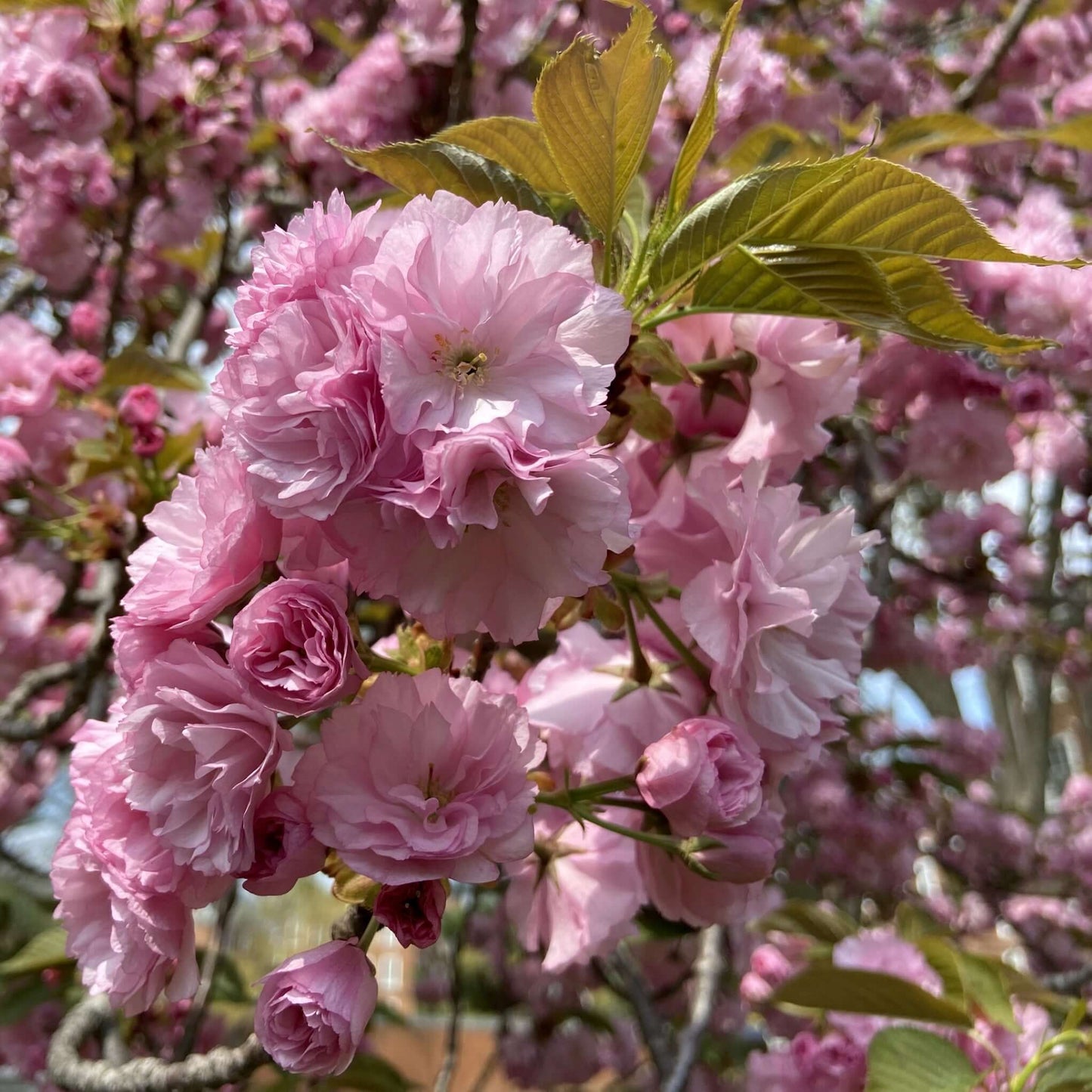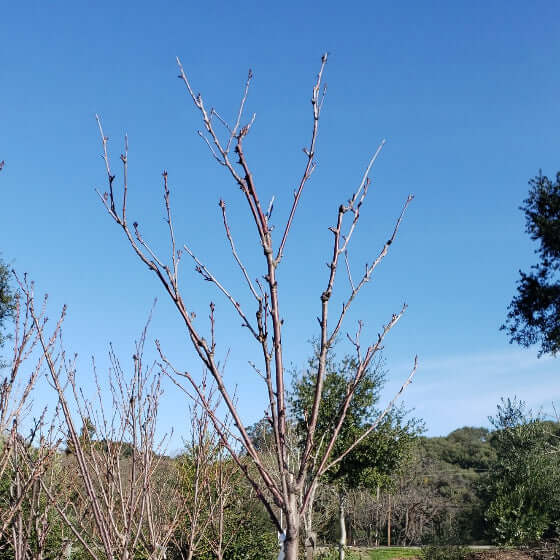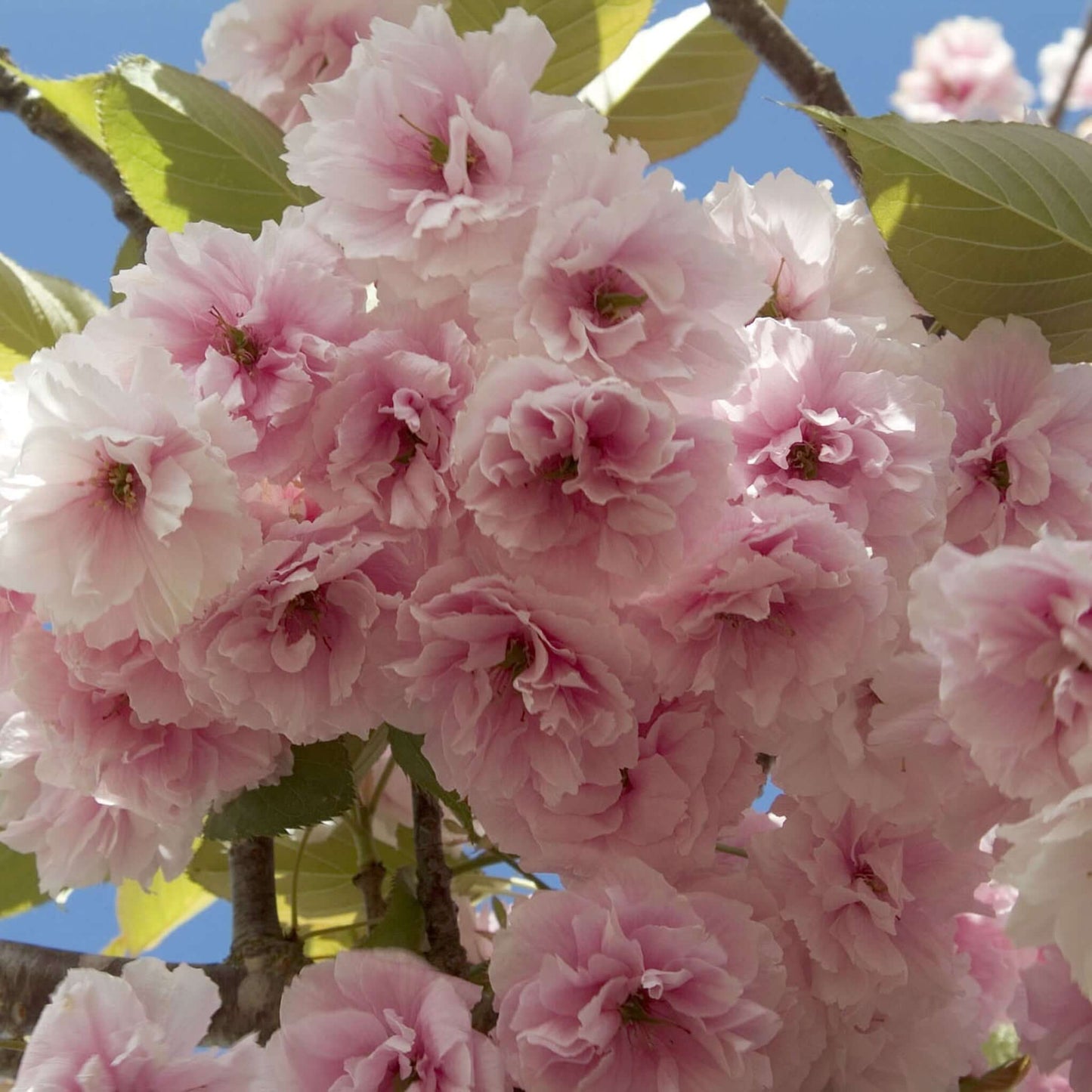Prunus serrulata ‘Kwanzan’, commonly known as the Kwanzan Cherry or Japanese Flowering Cherry, is a stunning ornamental tree known for its beautiful double pink blossoms in spring. Here’s how to plant and care for it:
Planting Prunus serrulata ‘Kwanzan’
Choose the Right Location:
- Sunlight: Kwanzan Cherry trees thrive best in full sun, needing at least 6-8 hours of direct sunlight per day. This ensures a prolific bloom in spring and healthy growth.
- Space: These trees can grow up to 20-30 feet tall and wide, so choose a location with enough space for the tree to spread without obstruction.
Soil Preparation:
- Well-Draining Soil: It prefers well-draining, loamy soil that is slightly acidic to neutral (pH 6.0-7.0). It can adapt to different soil types but struggles in soil that stays waterlogged.
- Amend Soil if Needed: If your soil is heavy clay, improve drainage by mixing in organic matter like compost or peat moss.
Planting Process:
- Dig a Generous Hole: Make a hole that is twice as wide and just as deep as the root ball. This allows the roots to spread out easily.
- Position the Tree: Place the tree in the hole, making sure the top of the root ball is level with or slightly above the surrounding soil. This prevents the trunk from sitting in water.
- Backfill and Water Thoroughly: Fill the hole with soil, pressing down gently to remove air pockets. Water deeply to help the soil settle around the roots.
Caring for Prunus serrulata ‘Kwanzan’
Watering:
- Regular Watering: After planting, water the tree deeply once a week for the first year, especially during dry periods. This helps establish a strong root system.
- Maintain Moisture: Mature trees are relatively drought-tolerant, but it’s best to water them during prolonged dry spells, particularly in the summer. Always water at the base of the tree to avoid wetting the leaves and flowers.
Fertilizing:
- Annual Feeding: Feed the tree with a balanced, slow-release fertilizer in early spring before new growth starts. Avoid over-fertilizing, as this can lead to excessive foliage growth at the expense of flowers.
- Organic Matter: Adding compost around the base each spring can provide a slow, steady release of nutrients and help improve soil structure.
Pruning:
- Shape and Structure: Prune in late winter or early spring while the tree is still dormant to remove any dead, damaged, or crossing branches. This helps maintain a clean, open shape that encourages airflow and reduces the risk of disease.
- Remove Suckers: Occasionally, the tree may produce suckers (new growth from the base). Remove these to maintain the tree’s shape and direct energy towards the main trunk.
Mulching:
- Retain Moisture and Regulate Temperature: Apply a 2-3 inch layer of mulch around the base of the tree, keeping it a few inches away from the trunk to prevent rot. Mulch helps retain soil moisture, regulate temperature, and reduce weeds.
- Renew Annually: Refresh the mulch layer each year to maintain its benefits.
Temperature and Frost Protection:
- Cold Hardy: Kwanzan Cherry trees are hardy in USDA zones 5-9 and can withstand winter temperatures typical of these zones. However, late spring frosts may damage new buds, so plant in a location with some protection from cold winds if you live in a cooler area.
- Protect Young Trees: If a sudden frost is expected, consider covering young trees to protect the blossoms or tender new growth.
Pest and Disease Management:
- Pests: Kwanzan Cherry trees can be affected by pests such as aphids, spider mites, and caterpillars. Monitor the tree regularly and treat infestations with insecticidal soap or neem oil if needed.
- Diseases: They can also be susceptible to fungal issues like powdery mildew, leaf spot, and canker. Proper spacing, pruning, and avoiding overhead watering can help reduce the risk of these problems.
